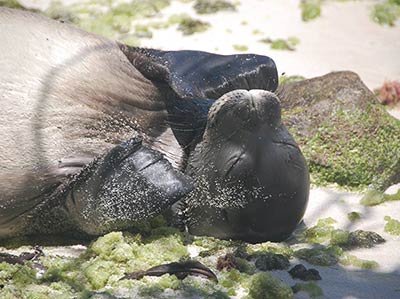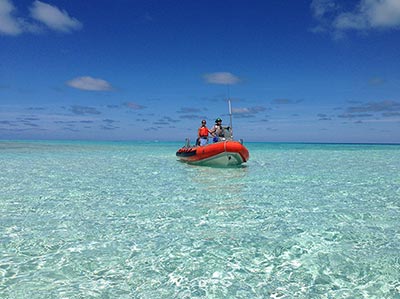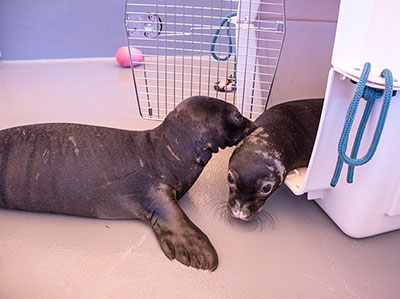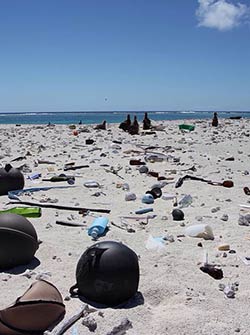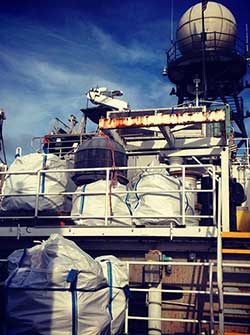Hawaiian Monk Seal Research Program Field Camp Deployed
On June 8, NOAA Ship Hiʻialakai returned from Papahānaumokuākea Marine National Monument, where researchers were on a 22-day mission to study the endangered Hawaiian monk seal. During the voyage, researchers and equipment were deployed at French Frigate Shoals, Laysan Island, Lisianski Island, Pearl and Hermes Atoll and Kure Atoll, where they will stay for the summer in remote field camps.
While at Pearl and Hermes Atoll, the team found two prematurely weaned young monk seal pups (so young that they still had their black pup coats), which they captured and transported to The Marine Mammal Center's Ke Kai Ola Hospital in Kona to be cared for and fattened up. The seals, aptly named “Pearl” (female) and “Hermes” (male), will be released back into the Monument once they have been rehabilitated.
In addition, several thousands of pounds of marine debris were collected by team members from NOAA's Hawaiian Monk Seal Research Program, the crew of the Hiʻialakai, and Sustainable Coastlines Hawaiʻi. The trash was brought back to Oʻahu as part of a pilot project to identify types and sources of marine debris and estimate accumulation rates in the Northwestern Hawaiian Islands.
The team will remain in the Monument for the summer, doing population counts, disentangling seals from marine debris, and moving young seals to areas with fewer sharks. The researchers will be picked up and brought back to Oʻahu during an expedition in September.
